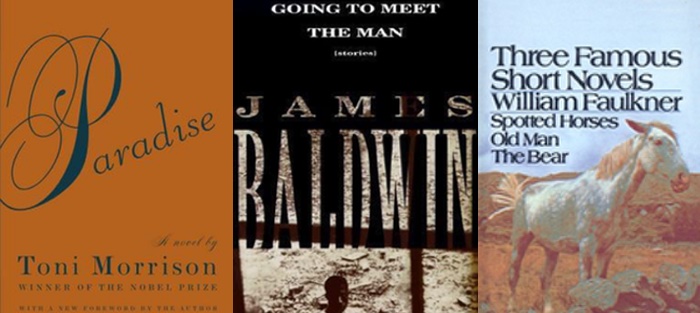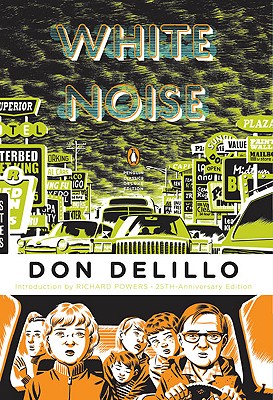Editor’s Note: For the first several months of 2022, we’ll be celebrating some of our favorite work from the last fourteen years in a series of “From the Archives” posts.
In today’s feature, Ayşe Papatya Bucak explores—and explodes—the trope of “setting as a character,” with five tips for doing it justice. The essay was originally published on February 29, 2016.
There is a story, “A Fable Ending in the Sound of a Thousand Parakeets,” by Kevin Brockmeier, that starts, “Once there was a city where everyone had the gift of song.” This is the kind of story of which a reader might say, “It’s like the setting was a character in the story.” But all they’d really mean is this is a story in which the setting has value. In this case, the setting, “a city where everyone had the gift of song,” is not so much a place as it is a collection of human behaviors. The setting has value, but it has no story of its own.
Take instead another Kevin Brockmeier story, “The Year of Silence,” the first line of which is: “Shortly after two in the afternoon, on Monday, the sixth of April, a few seconds of silence overtook the city.” This silence is absolute, “even the wind seemed to hesitate.” Four days later the silence comes back and lasts longer. And so on. The setting in “The Year of Silence” plays an active role in the story; it’s a story about how people react to the physical attributes of the place where they live. But that’s still not quite the same as a story in which “the setting is like a character in the story.” Because what would that look like really?
Have you ever heard it said in workshop, “What’s at stake for this setting?” Probably not. So if we’re so willing to say setting is like a character in a story, why not treat it as we would a character in a story? What if a story’s setting had a past, a present and, at story’s end, an implied future? What if it was in conflict with other settings? What if it was in conflict with itself? What if instead of a character-driven story we had a setting-driven story? What if settings had a tragic flaw? What if we had round settings and flat settings? What if a setting had a defining moment, a climax, an epiphany?
Of course some writers are doing exactly these things and have been for some time.
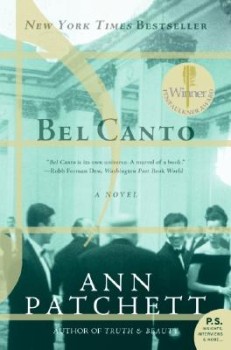 Character Setting Lesson #1: Consider having the main character setting undergo some kind of change over the course of the story.
Character Setting Lesson #1: Consider having the main character setting undergo some kind of change over the course of the story.
In Ann Patchett’s novel Bel Canto, hundreds of party guests are taken hostage at the fancy residence of the unidentified host country’s Vice President. Over the course of the novel, the house becomes first a prison; then an Eden (for both the hostages and the hostage-takers, who all get busy falling in love); and then a trap, as the police tragically invade, guns blazing. Each change in the house parallels the changing emotions of the people in the house. The setting changes as the characters change. This is perhaps the most conventional approach to making setting a character, in which the setting is a reflection of the characters rather than independent from them.
Character Setting Lesson #2: Typically there should be something at stake for a character setting.
In her novel Paradise, Toni Morrison elevates the notion of setting as character to another level. The characters reflect their setting rather than vice versa. In the novel, the all-black town of Ruby has on its outskirts a house, known as the Convent, with a history. The house was first an embezzler’s folly (with the mermaid-shaped bathtub to show for it), then a convent and boarding school for Arapahoe girls, and then finally a haven for misfit, misbehaving women. And in the first chapter of Paradise it is clear that the house, the Convent, is under attack by the town, Ruby.
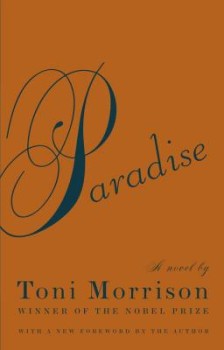 Chronologically the attack is the last act of the novel. But Morrison has placed it first, firmly establishing that the individual characters, who are rendered vividly in the next three hundred pages, are surrounded by, superseded by, contextualized by the two settings in which they live. In fact, the first chapter, which depicts the citizens of Ruby murdering the citizens of the Convent, is full of details of place, and almost no details of character. By opening her novel in this fashion, Morrison declares Paradise’s central conceit; that these aren’t just people battling for survival, but places battling for survival.
Chronologically the attack is the last act of the novel. But Morrison has placed it first, firmly establishing that the individual characters, who are rendered vividly in the next three hundred pages, are surrounded by, superseded by, contextualized by the two settings in which they live. In fact, the first chapter, which depicts the citizens of Ruby murdering the citizens of the Convent, is full of details of place, and almost no details of character. By opening her novel in this fashion, Morrison declares Paradise’s central conceit; that these aren’t just people battling for survival, but places battling for survival.
And while the novel makes clear that the town of Ruby is the aggressor, a definite villain demolishing its enemy, Morrison is careful to make sure that her villain is not one-dimensional. She gives the town a back-story that does not justify the town’s actions, but does at least explain them.
As an all-black town, Ruby (note the town even has a human name), believes for good reason it is under threat. Its residents have found protection in their insularity, and the all-are-welcome community of women at the Convent is a direct counterpoint to that insularity. And because the arrival of the women at the Convent coincides with an increase in trouble and crime in Ruby, the town wrongfully believes that by destroying the Convent it can maintain its purity and remain protected. What’s at stake for both Ruby and the Convent is survival.
Character Setting Lesson #3: Everybody place has a past and this informs their its present and their its future.
Just as in Paradise, Michael Ondaatje’s novel The English Patient uses a setting with a back-story that informs its present, just as a character’s back-story would inform his or her present. The novel opens with a nurse and her badly burned patient left alone in a villa in Italy at the end of World War II. The villa has been, in sequence, a nunnery, a last stronghold for the German army, and a hospital for the Allies. A place of worship, a place of battle, a place of healing, but in all cases a place of refuge for those who have banded together. And so it becomes a place of refuge for the nurse, Hannah; her dying patient; Caravaggio, a thief and spy who soon joins them; and a sapper, Kip, who comes to rid the villa of hidden bombs left by the retreating Germans.
 And it is these bombs that provide one of the most meaningful uses of setting for the novel. Ondaatje writes, “it is important to die in holy places,” and so the back-story’s dominant work is to reinforce that this villa is a holy place for the patient to die. But, if you think of this as a novel about place, then the question remains: what do the villa’s past and present imply for its future?
And it is these bombs that provide one of the most meaningful uses of setting for the novel. Ondaatje writes, “it is important to die in holy places,” and so the back-story’s dominant work is to reinforce that this villa is a holy place for the patient to die. But, if you think of this as a novel about place, then the question remains: what do the villa’s past and present imply for its future?
Throughout the novel, Kip has successfully defused bombs throughout the neighboring countryside, within the fields immediately surrounding the villa, and even in the villa itself. It seems as if he is removing all traces of the violent past that humans have inflicted on this idyllic setting, thus saving it. The future for the villa, for Italy, for the allied countries, for humanity in general, looks pretty good.
But the novel ends with Kip, an Indian soldiering for the British, fleeing the villa in anger upon hearing of the bombing of first Hiroshima and then Nagasaki. This new weapon has far outpaced his healing skills, and any contemporary reader knows what atomic weaponry does to a landscape. The future of Hiroshima and Nagasaki is not good. But what does this suggest about the future of the villa?
Kip flees because he realizes the atomic bombs would never have been dropped on Italy or Germany. They were dropped on Asia because the East, to the West, will, he now understands, never be a civilization worthy of being saved. And he, of course, is of the East, and he has been working to save the West. And so the villa is tainted. The moment of rest and sanctuary is over.
Character Setting Lesson #4: Instead of your character setting changing over the course of the story, the reader’s perception of the character setting might change.
Take, for example, James Baldwin’s use of New York City in his short story “Sonny’s Blues.” The city is already an archetypal setting, one that many readers will automatically read as full of threat. And at the start of the story Baldwin seems to embrace that archetype. The narrator has just learned that his brother Sonny has been arrested “in a raid on an apartment downtown, for peddling and using heroin.” And he is in disbelief, trying to hold to the idea that Sonny is different from the other boys he has seen turn bad, “a good boy” who “hadn’t turned hard or evil or disrespectful, the way kids can, so quick, especially in Harlem.”
In the first half of the story, Harlem is established as a place from which people want to escape—through drugs, through movies, through enlistment, through work and education. And yet, Baldwin seems to suggest, it is a place from which no one escapes. When Sonny is let free from jail, the narrator goes to meet him, and as they take a taxi uptown Sonny asks if they can “have the driver drive alongside the park? On the west side” because he hasn’t “seen the city in so long.” But as the narrator tells it:
“[the] streets hadn’t changed…. Most of the houses in which we had grown up had vanished … but houses exactly like the houses of our past yet dominated the landscape, boys exactly like the boys we once had been found themselves smothering in these houses came down into the streets for light and air and found themselves encircled by disaster. Some escaped the trap, some didn’t. Those who got out always left something of themselves behind, as some animals amputate a leg and leave it in the trap. It might be said, perhaps, that I had escaped, after all I was a school teacher; or that Sonny had, he hadn’t lived in Harlem for years. Yet as the cab moved uptown through streets which seemed with a rush, to darken with dark people, and as I covertly studied Sonny’s face, it came to me that what we both were seeking through our separate cab windows was that part of ourselves which had been left behind.”
Harlem, readers are allowed to believe, is an unchanging place, which nobody can ever really depart from.
And as the cab ride continues, so does the narrator: “We … started rolling up Lenox Avenue. And I’d known this avenue all my life, but it seemed to me again, as it had seemed on the day I’d first heard about Sonny’s trouble, filled with a hidden menace which was its very breath of life.” This seems to be a restatement of Harlem’s archetypal nature: dangerous. But hidden within that statement are all of the other days of the narrator’s life, when the avenue does not seem filled with “a hidden menace,” in which “its very breath of life” is something else.
And so this is the first hint of the dual nature of the settings in “Sonny’s Blues.” Subsequently Baldwin takes the reader into a series of flashbacks that do as much to reveal Harlem as they do these characters. When the narrator’s mother suggests the family move to a “safer neighborhood,” their father replies, “Safe, hell! Ain’t no place safe for kids, nor nobody.” And soon after the story moves into a deeper flashback, in which the narrator’s father is out on a country road with his own brother on a moonlit night, “bright like day,” when a car of drunk white boys run down the father’s brother. And so Baldwin makes clear, you can be killed in the country, just as you can be killed in the city, and you can be killed in the light, just as you can be killed in the dark.
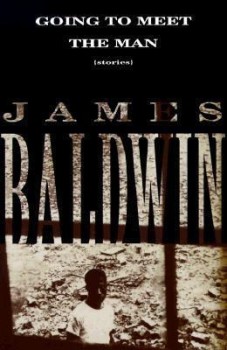 The flipside of this is that any dangerous setting can also be safe. The narrator recalls Sunday afternoons when his parents’ “living room would be full of church folks and relatives. There they sit,” [note Baldwin’s switch into present tense, indicating the value of this past setting to the present setting] “in chairs all around the living room, and the night is creeping up outside, but nobody knows it yet … Maybe there’s a kid,” [again, note how Baldwin has moved from the specific to the general—the narrator is the kid, but so are a lot of other people] “quiet and big-eyed, curled up in a big chair in the corner. The silence, the darkness is coming, and the darkness in the faces frightens the child obscurely. He hopes that the hand which strokes his forehead will never stop….” The child is kept safe for the moment in his living room. But for every child kept safe, there is in “Sonny’s Blues” a child, like the narrator’s own daughter, who, at two-years-old, drops dead while playing in her living room. The living room is at one moment a haven, at another a hazard.
The flipside of this is that any dangerous setting can also be safe. The narrator recalls Sunday afternoons when his parents’ “living room would be full of church folks and relatives. There they sit,” [note Baldwin’s switch into present tense, indicating the value of this past setting to the present setting] “in chairs all around the living room, and the night is creeping up outside, but nobody knows it yet … Maybe there’s a kid,” [again, note how Baldwin has moved from the specific to the general—the narrator is the kid, but so are a lot of other people] “quiet and big-eyed, curled up in a big chair in the corner. The silence, the darkness is coming, and the darkness in the faces frightens the child obscurely. He hopes that the hand which strokes his forehead will never stop….” The child is kept safe for the moment in his living room. But for every child kept safe, there is in “Sonny’s Blues” a child, like the narrator’s own daughter, who, at two-years-old, drops dead while playing in her living room. The living room is at one moment a haven, at another a hazard.
Likewise, the streets where drug addicts and dealers hang at the start of the story are the same streets where Sonny and the narrator experience a moment’s relief through the music of a street revival. And the downtown where Sonny met his drug addiction is the same downtown that provides Sonny, an accomplished jazz musician, a moment’s relief when he returns to play piano in the story’s climactic scene. By the end of the story, Baldwin has built his argument: every place is both the seat of suffering and its balm.
The dominant relationship of “Sonny’s Blues” is that between the narrator and his brother, and the dominant storyline is that of the narrator coming to better understand his brother, to see him in all of his complexity. But running parallel to that is the narrator’s coming to understand his setting, to see it in all of its complexity. Sonny has not changed; New York has not changed; and yet, the narrator, and the reader, have come to a new perception of each.
Character Setting Lesson #5: Make use of both flat and round characters settings.
In Aspects of the Novel, E.M. Forster memorably divides characters into flat and round. Flat characters are defined by a single trait, and Forster describes them as “little luminous disks of a pre-arranged size, pushed hither and thither,” immediately recognized by “the reader’s emotional eye.” They are useful and efficient tools within a story for creating a predictable reaction in readers.
On the other hand, according to Forster, “the test of a round character is whether it is capable of surprising in a convincing way.” If it “never surprises” or “does not convince,” then a character is not round. And so it is with setting.
In Ron Hansen’s short story “Wickedness,” a blizzard comes to town much in the way a stranger comes to town in so many stories, and like a flat character the blizzard sings its one note—rendering the familiar world unfamiliar by covering it with snow. And so the characters in the story must all react to this new setting. They are round, but the setting is flat.
But let’s look instead at another story that takes nature as its setting, William Faulkner’s first published version of “The Bear.” The story opens:
“He was ten. But it had already begun, long before that day when at last he wrote his age in two figures and he saw for the first time the camp where his father and Major de Spain and old General Compson and the others spent two weeks each November and two weeks again each June. He had already inherited then, without ever having seen it, the tremendous bear with one trap-ruined foot which, in an area almost a hundred miles deep, had earned for itself a name, a definite designation like a living man.”
With this start, it seems as if the bear, who in this case operates as a transitional being somewhere between setting and character, part place and part human, will be the round “character” in the story, the one capable of surprise. Unlike the bear, “Old Ben,” the wilderness has not “earned for itself a name, a definite designation like a living man,” but is known only by its single trait—wildness.
However, by story’s end, it seems that the protagonist’s true inheritance is not the bear, but the wilderness in which he and the bear meet each other, and the thing capable of action and surprise is again not the bear, but that wilderness.
Faulkner’s first mention of the wilderness is of its impressive size—“almost a hundred miles deep”; his second mention is of its impressive nature—it is the space where the bear “bodily” carried “shotes and grown pigs and even calves” to be “devoured”; and the third mention is of its pure state—“unaxed.” Again it seems like the wilderness will simply be wilderness—a place in contrast to civilization.
 But the fourth mention is of “the doomed wilderness whose edges were being constantly and punily gnawed at by men with axes and plows who feared it because it was wilderness…..” In one word—“doomed”—Faulkner establishes the wilderness as both alive and dying. Like any human being, the wilderness has been born and it will die. This is not an entirely surprising characterization of a natural setting—any wilderness in the United States can be assumed to be under threat. But in establishing the wilderness as alive—and dying—Faulkner is only taking a first step in creating his character.
But the fourth mention is of “the doomed wilderness whose edges were being constantly and punily gnawed at by men with axes and plows who feared it because it was wilderness…..” In one word—“doomed”—Faulkner establishes the wilderness as both alive and dying. Like any human being, the wilderness has been born and it will die. This is not an entirely surprising characterization of a natural setting—any wilderness in the United States can be assumed to be under threat. But in establishing the wilderness as alive—and dying—Faulkner is only taking a first step in creating his character.
During the boy’s first time in camp, he goes into the woods each day with Sam Fathers, “the son of a slave woman and a Chickasaw chief,” and for days there are no signs of the bear. But one day they finally hear the dogs baying and one returns to camp wounded. It is, of course, the bear that has rendered this wound, but for the boy it is as if “the wilderness, leaning for the moment down, had patted lightly once the hound’s temerity.” For the boy, the wilderness and the bear are not separate, and Faulkner, by pairing the two (in the boy’s eyes at least) is able to suggest that the woods are capable of action, of fighting, just as any living creature is. But Faulkner cannot stop there, because the idea that a setting can take action is still, in that moment, dependent on the boy’s point of view. The boy, rather than the reader, has been convinced of the setting’s roundness.
Upon returning to the woods the next summer the boy returns to the place in the woods where he had been seen by, but did not see the bear (at this point, seeing the bear has become the boy’s life’s purpose). And there he receives, via Sam Fathers, his first communication from the woods. Sam, taking on the role of both mentor and translator, tells the boy, “‘You ain’t looked right, yet’ … ‘It’s the gun.’” And so the boy goes into the wilderness without his gun, thinking “of his own will and relinquishment he had accepted not a gambit, not a choice, but a condition in which not only the bear’s heretofore inviolable anonymity but all the old rules and balances of hunter and hunted had been abrogated.”
But still the boy does not see the bear.
After nine hours in the woods, he stops and thinks, “’All right. Yes. But what?’” He no longer has Sam Fathers traveling with him; he asks his question directly of the woods. And he “stood for a moment, alien and small in the green and topless solitude, answering his own question before it had formed and ceased. It was the watch, the compass, the stick—the three lifeless mechanicals with which for nine hours he had fended the wilderness off…” In this moment, the setting is one step closer to a round characterization, though not quite there yet. The boy has asked a question of the woods, but it is not exactly the woods that answers; it is the boy’s own mind—the very thing that makes him human—that answers.
Without his compass the boy does his best to keep his bearings but again he enters territory he has not seen before and sitting upon a downed log sees “the crooked print—the warped tremendous, two-toed indentation which, even as he watched it filled with water.” The bear’s print—so marked by a trap wound—is dissolving into the earth, being swallowed back up by the wilderness, in front of the boy. And:
“as he looked up, the wilderness coalesced, solidified … Then he saw the bear. It did not emerge, appear; it was just there, immobile, solid fixed in the hot dappling of the green and windless noon… looking at him where he sat quietly on the log and looked back at it. Then it moved. It made no sound. It did not hurry. It crossed the glade, walking for an instant into the full glare of the sun … Then it was gone. It didn’t walk into the woods, the undergrowth. It faded, sank back into the wilderness.”
It is as if, for a moment, the wilderness, recognizing that the boy had accepted its terms, parted a veil. The bear did not step into the boy’s vision, the wilderness “coalesced” and “solidified” and allowed the boy to see the bear.
This is not the end of the story; the boy and the bear will have one more encounter, and the boy will have more to learn from the wilderness, which “was his college.” But Faulkner’s point has been made. The wilderness in “The Bear” is not merely where the story takes place; it, like a character in the story, has something at stake, it has a past, a present, and an implied future, and it is capable of actions that surprise. Well and truly round.
Of course, each of these examples have characters at their center that matter as much as setting does. What these writers have done is add a second layer to their fiction that complicates it or broadens it or deepens it. But I wonder if there is a next step that fiction writers rarely reach, in terms of a setting-driven story. (Science fiction and horror fiction have probably come the closest; the first sometimes showing the devastating absence of humans from a ruined landscape and the second, using houses or other physical spaces as antagonists). And I wonder if writing instruction’s consistent emphasis on the impact of action on character as the dominant story structure discourages emerging writers from visualizing and creating a different kind of story. After all, plenty of essayists consider place, rather than people, their central subject. Could plenty of fiction writers do the same?

